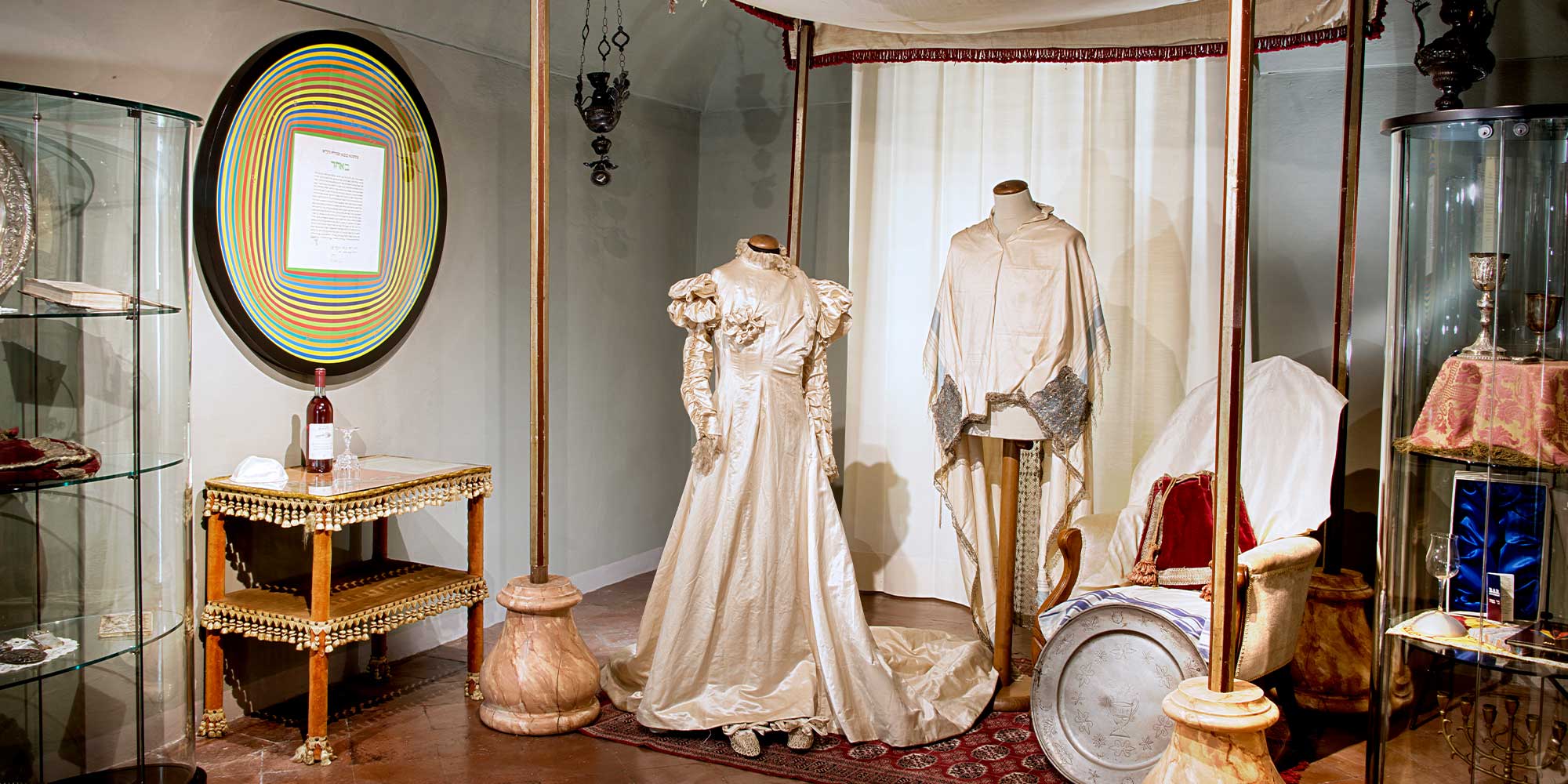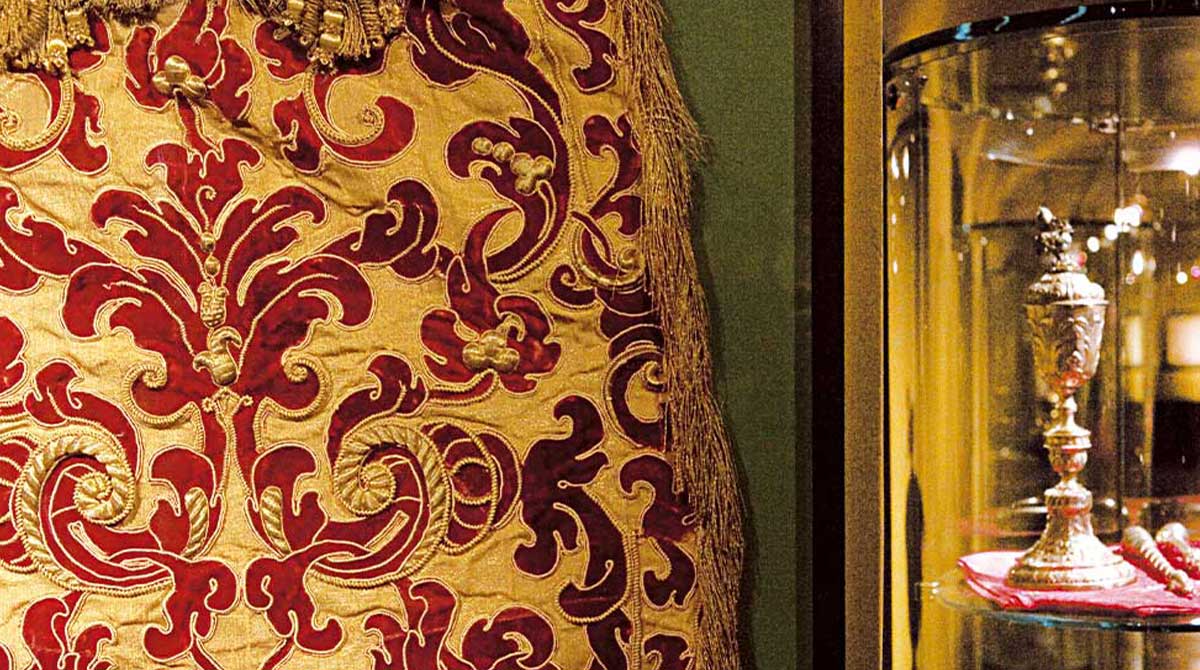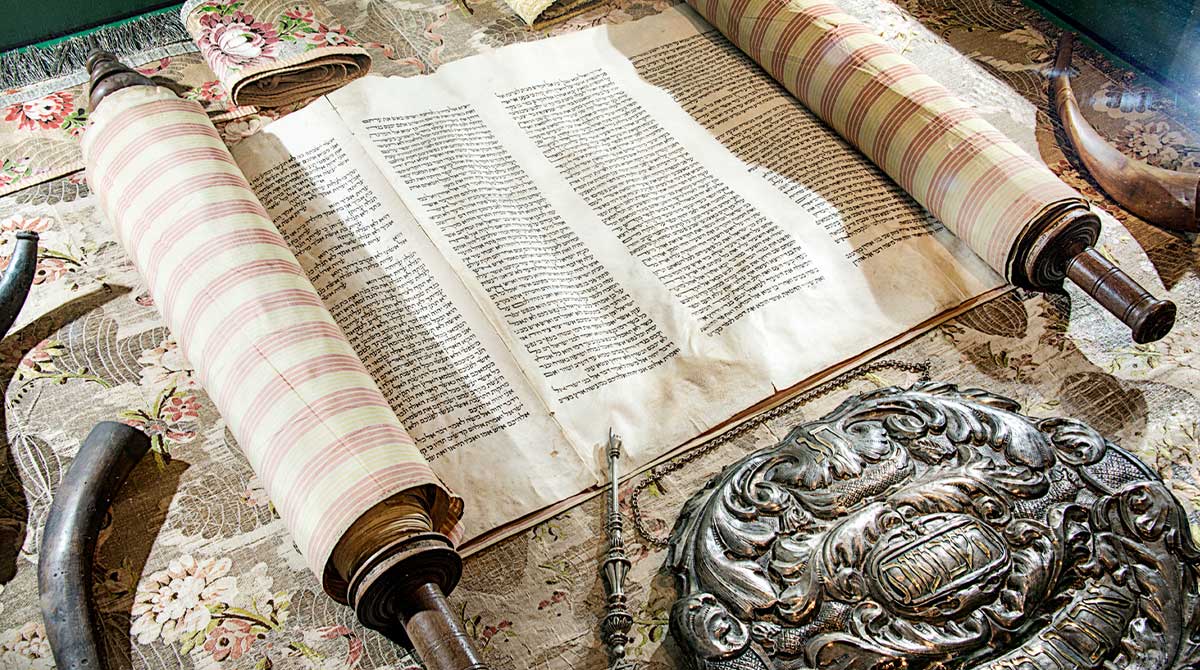Original objects placed in educational settings
Adjacent to the old women’s gallery, on the first and second floors of the complex, is the part of the museum designed to introduce visitors to the main aspects of Jewish life through original objects placed in educational settings. Each room and corner illustrates a Jewish festival or special occasion.
The room on the first floor exhibits some meghillot, the scrolls from the Book of Esther, used during the joyous holiday of Purim. On the second floor is the room dedicated to Pesach, the Passover. Inside you can see a typical table for the Seder, the ritual dinner, extremely evocative, celebrating the exodus, the exit of the Jewish people from Egypt and slavery and the regaining of freedom. The adjoining rooms on the second floor display numerous Hanukkah lamps, including a magnificent 15th century bronze lamp that is among the oldest objects in the museum. Within the museum complex, the theme and meanings of Hanukkah and light are also reinterpreted in a modern way, especially in the context of the Museum of Lights collection.
The special atmosphere of the the Shabbat, the holy day dedicated to rest, is recreated by the display of a family table, on which rests the lamp with Shabbat candles that is lit on Friday before sunset to greet the arrival of the day of rest (all Jewish holidays begin at sunset on the previous day), the cup for the kiddush, the consecration prayer that is said over the wine, and the challah, a special braid-shaped bread that is eaten during the holiday and the spice rack with which thehavdalah, the prayer that is recited at the end of the Shabbat day, is celebrated.
A small sukkah commemorates the festival of Sukkot. It reproduces in small scale the huts in which Jews are supposed to live during the festival, which falls in autumn. One can also admire a precious container for etrog, the cedar, one of the elements that make up the lulav, an object used to perform the ritual of the festival of Sukkot.
The museum collection continues with an exhibition of objects used at various times in Jewish life. Very valuable is the ancient set of instruments necessary for the circumcision of children, the Brit Milah. A large collection of shaddays, beautiful amulets that are placed in cradles. Shadday means “Almighty” and is one of God’s attributes, which is why shaddays are good luck. Next is a shrine containing an interesting silver wedding ring in the shape of a house. It is a ring that belonged to the congregation, which lent it to the bride for the wedding ceremony. In this section devoted to anniversaries celebrated in the family, the Jewish wedding ceremony occupies a prominent place. The groom wearing the tallit and the bride stand under a chuppah, the traditional canopy under which all Jewish weddings must take place. The wedding dress on display belonged to Annetta Treves Levi, mother of the writer Carlo Levi. One can also see some ancient ketubot, marriage contracts containing the rights and duties of both spouses.





